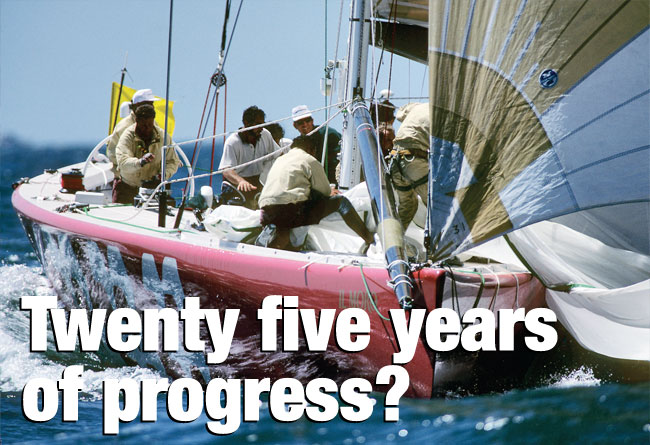
Excellent technical regulations are essential for complex sports like Formula One, yacht racing and performance gliding, but it’s not easy to identify a balance that encourages valuable development without allowing costs to spiral or the risks of taking part to become unacceptable. Red Bull Racing’s Andrew MacFarlan compares some of the trade-offs
America’s Cup
So, back to 1990, the 1987 America’s Cup (many people’s favourite of recent times) was still a vivid memory – fought out for the last time in the venerable 12 Metres: 65ft long, displacing 25 tonnes and achieving 8.5kt upwind and perhaps 11kt downwind, for many the ideal yacht type to test the best designers and sailors, although beyond the interesting design concepts catalysed by the winged-keel Australia II in 1983 the class was now outdated; even the glass-fibre construction of the 1987 Kiwi yachts proved highly controversial!
Interestingly, though, in the UK the 1987 Cup was covered weekly on TV (I think I’ve only just chucked out the old VHS recorder) – something I’m sure many of us would welcome these days.
The monohull versus catamaran (mismatch) Cup of 1988 provided, if nothing else, a showcase for what was now poss - ible with modern technology and comp - osite materials, with design offices freed from the outdated constraints of the 12 Metre rule. An enormous (for the time) composite monohull with carbon mast and deep bulb keel versus a catamaran with a wing rig concept borrowed from the C-Class Little America’s Cup boats; both were very interesting yachts which in their own ways pointed to the future – however, they delivered an America’s Cup event that I struggle to remember.
The America’s Cup moved on from this to produce the IACC rule – another mathematical formula-driven rule that traded length, displacement and sail area – and as with the Whitbread 60 rule it was exciting for the young designer; the hulls and spars were composite, with heavy emphasis placed on the structural engineering as every gramme in the bulb equalled potential speed.
We invite you to read on and find out for yourself why Seahorse is the most highly-rated source in the world for anyone who is serious about their racing.
To read on simply SIGN up NOW
Take advantage of our very best subscription offer or order a single copy of this issue of Seahorse.
Online at:
www.seahorse.co.uk/shop and use the code TECH20
Or for iPad simply download the Seahorse App at the iTunes store


